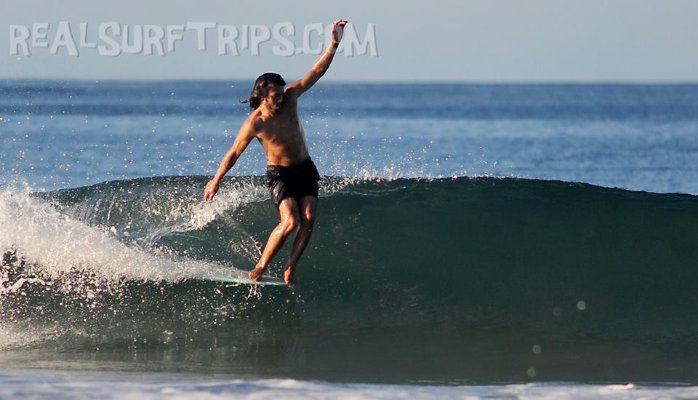 Nose riding has become the pinnacle of longboard surfing in the same way aerial surfing has for short boarding. Many surfers describe nose riding like dancing. It requires expert footwork and impeccable timing. Everywhere we look we see endless photos of surfers “hanging ten.” All hang-ten’s are impressive, yet certain types are more notable than others. The best hang-ten’s happen when the rider is far back in the pocket in the most crucial part of the wave, but he looks calm and casual. When you look closer at a surfer hanging ten, it looks impossible. The rider and board seem to be floating above the water. How does this happen? Let’s take a closer look at the forces at work and how to pull off a classic nose ride.
Nose riding has become the pinnacle of longboard surfing in the same way aerial surfing has for short boarding. Many surfers describe nose riding like dancing. It requires expert footwork and impeccable timing. Everywhere we look we see endless photos of surfers “hanging ten.” All hang-ten’s are impressive, yet certain types are more notable than others. The best hang-ten’s happen when the rider is far back in the pocket in the most crucial part of the wave, but he looks calm and casual. When you look closer at a surfer hanging ten, it looks impossible. The rider and board seem to be floating above the water. How does this happen? Let’s take a closer look at the forces at work and how to pull off a classic nose ride.
Nose riding happens when the fin creates drag while the tail of the board is pressed down by the breaking curl of the wave. The water is sucked over the deck of the board and the weight of the water counter balances the nose ride. At the same time, water gathering underneath the board cushions the nose. So to hang ten, the board must literally be sucked into the wave. But try not think about any of this while attempting the nose ride! Let your instincts and balance do all the work.
There are many important things that need to come together to pull off a nose ride. Here’s a quick guide to get your toes on the nose.
* A good board always comes first. Not all long boards are created equal. Look for one with a wide nose, minimal rocker, and is 9 feet or longer.
* Next comes the bottom turn. Bottom turning with too much power might propel you to the flat bottom while not enough power will not put you in the pocket.
* At this point you want to make a few quick steps to the nose but remember to walk lightly. Cross stepping is the most stylish of methods, but you can shuffle or hop as well.
* Lean your torso back and if you are positioned correctly the board will remain at the same pace and your weight will be on the nose.
This takes lots of practice and persistence. But before you know it, you’ll be hanging ten!

